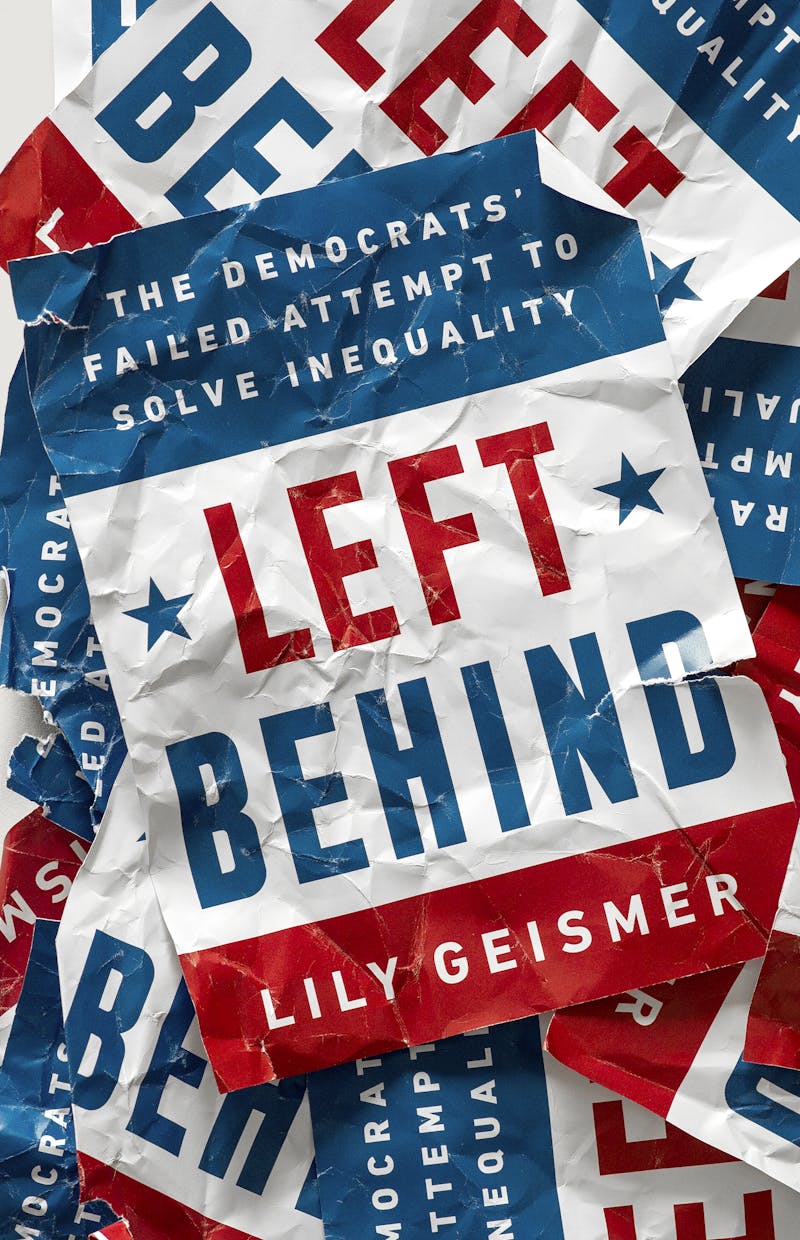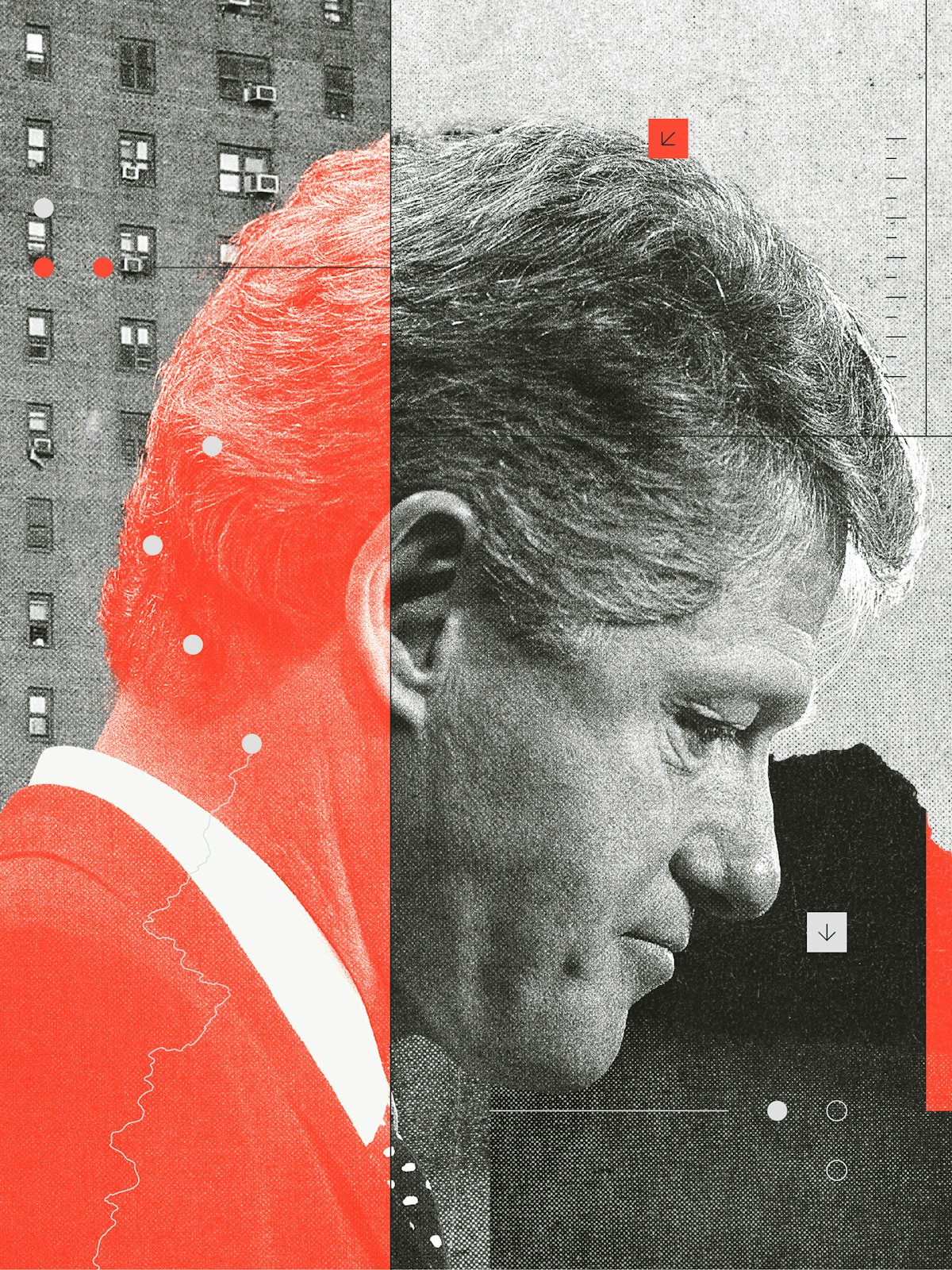On December 21, 2000, shortly before leaving office, President Bill Clinton signed the New Markets Tax Credit Program into law, as part of the Consolidated Appropriations Act of 2001. He called it “the most significant effort ever to help hard-pressed communities lift themselves up through private investment and entrepreneurship.” Legacy-defining stuff, in other words. Or, as a new book argues, “a fitting capstone to Clinton’s relentless overselling of what small market–based antipoverty programs could do.”
To build support for the program’s passage, Clinton had gone on a nation-spanning “New Markets” tour of poor places, both urban and rural. Clinton visited Appalachia, South Dakota’s Pine Ridge Reservation, Chicago, East Palo Alto, rural North Carolina, and more. For stretches of these tours, he was accompanied by the civil rights activist Jesse Jackson, who twice vied for the Democratic presidential nomination in the 1980s with his “Rainbow Coalition” of the urban and rural poor and working class.
This might have looked like a rapprochement: The Democratic Leadership Council, which Clinton led prior to his presidency, had notoriously denied Jackson an invitation to its 1991 conference, and Jackson had long decried the organization as the “Democrats for the Leisure Class.” But it was more of a victory lap for the DLC. By 2000, the DLC and Clinton’s vision not just for the Democratic Party but for the economy as a whole had fully won. Jackson, who by this point had opened an office on Wall Street, had reoriented his civil rights activism around trying to get the financial industry to invest in dispossessed communities. The Clintonian project had prevailed. The economy was humming, and the government was running a surplus. The Third Way was riding high.

Except in those places Clinton had decided to visit in the last days of his second term. Jackson later recalled “one of the corporate leaders” beside him on a dais, looking out at the crowd in Pine Ridge, saying, “I’ve always just seen Indian reservations…. Now, I see two supermarkets. I see a car dealership. I see 7,000 people wearing clothes. I see a market.” Where once there had merely been marginalized and impoverished people, now there was a market—that is, the potential for someone else to make a profit off of those people.
The “New Markets” tour was meant to be a sales pitch for an anti-poverty program. The historian Lily Geismer presents it as, instead, a tour of the wreckage of Bill Clinton’s presidency and a window into the blinkered ideology of his broader political movement. Her new book, Left Behind: The Democrats’ Failed Attempt to Solve Inequality, should make almost any left-of-center reader retroactively furious about the 1990s and the inability of its architects to foresee the twenty-first century they were creating.
We are in something of a golden age of both scholarly and popular histories of the conservative movement, often produced by people on the left. The reader who wishes to learn how we got from Goldwater to Trump can reach for Lisa McGirr’s Suburban Warriors, or comprehensive histories of postwar American conservatism by George H. Nash or Rick Perlstein. (Sam Adler-Bell, cohost of Know Your Enemy, a podcast about the history of the right, has commented that left-wing historians and critics are often more interested in the history of the conservative movement, and the ideas of its pivotal members, than the right itself is.) There are fewer useful histories of how we got from Johnson to Biden, or from Humphrey to Harris. Contemporary liberalism may have fewer chroniclers in part because it often resists easy definition as a coherent movement; even its leading political lights will, in the United States, sometimes reject the label.
Geismer has been helpfully addressing this gap. Her previous book, Don’t Blame Us, traced the political evolution of suburban liberals in the second half of the twentieth century, by making a case study of the high-tech corridor along Route 128 outside Boston. That book, focusing often on specific (and sometimes obscure) political campaigns and battles in one geographic area, is illuminating, but perhaps a harder sell for a general audience than Left Behind, which offers a broader political history of U.S. domestic policy in the 1990s, populated by a cast of characters a reader alive in that era has likely already heard of. (Not to overstate the Beach Read appeal of a book that presumes you might like to know how Enterprise Zones got rebranded as Empowerment Zones—though, speaking for myself, I did.)
Despite its focus on poverty policy, Left Behind is a book about winners. Other histories of Democratic politics that include this era, like Ryan Grim’s We’ve Got People, focus on the internal political battles for power in the Democratic Party; Geismer’s work is about the people who emerged triumphant from those battles. It’s about the dog that caught the car, if the car was a large base of suburban professional–class support and the dog was Al From. The men (Geismer makes clear they were nearly all men) who wanted to transform the party largely got what they wanted, and were given opportunities to put their preferred ideas into action again and again. Left Behind asks that we judge these winners not by their political victories, but by whether their ideas actually worked in practice. The judgment is not kind.
The crew that would come to take over the Democratic Party organized themselves, in the 1980s, around the idea that the party had become discredited among the public because it was in thrall to its more liberal elements. These “New Democrats” gravitated toward Gary Hart, who unsuccessfully ran for the Democratic Party nomination in 1984, positioned as the candidate of “new ideas” against Walter Mondale, ostensibly the embodiment of stale Great Society liberalism. Hart, along with allies like Representative Tim Wirth, articulated what Geismer calls “larger generational skepticism with large institutions and bureaucracy.” In practice, “large institutions” tended to mean unions and government agencies. The New Democrats were similarly allergic to “transactional politics” and “special interest groups,” which Geismer helpfully defines as “African Americans, women, white farmers, and, especially, organized labor.”
Even by the mid-1980s, Jesse Jackson could correctly note that this definition of “special interests” happened to define them as the Democratic Party’s actual base of support, or, as he put it, “members of our family.” Hart was notably more popular with white pundits than with Black primary voters. But what the New Democrats truly wanted, and truly believed their policy agenda would win, was the white suburban vote. In the wake of Ronald Reagan’s reelection, in 1985, the political strategist Al From founded the Democratic Leadership Council, with an inaugural membership of 41 people, including 14 senators and 17 representatives. Of that group, two members were nonwhite, and none were women. The philosophy of the DLC, shaped by early members like From, the political consultant David Osborne, and Arkansas Governor Bill Clinton, was to go after the “aspiring middle” electorate in suburbia rather than the working class and dispossessed, and to appeal to it with an agenda that stressed economic dynamism, free trade, embrace of the tech industry, and—vitally—the destruction of the welfare state.
This gets to a central tension in New Democrat thought. Seemingly at no point can anyone conclusively decide if their policy agenda is meant to be politically effective—to win over white suburbanites—or to implement successful policy, which in this case would mean reforming welfare in a way that would leave poor people better off. Once Bill Clinton was in power, actual “welfare reform,” the destruction of the New Deal–era Aid to Families with Dependent Children assistance program, was passed largely because “end welfare as we know it” was a Clinton campaign trail promise, and Bruce Reed, of the White House Domestic Policy Council, had come to believe that phrase—which he had taped up in his office—had been vital to Clinton’s 1992 victory. Clinton, then running for reelection, was comfortably ahead in the polls when he signed the welfare reform bill. His political adviser Dick Morris had urged him to sign it as “insurance.”
This reflects, on the one hand, a chilling pattern of cynicism about the effect of domestic policy on actual people, and, on the other, a genuinely naïve faith that “the market” would simply take care of everyone if unleashed to do so. Geismer mainly avoids the useful but oft-abused term “neoliberalism” when describing the New Democrats’ ideology, and instead focuses on their ethos of “doing well by
doing good.” Unlike an earlier liberal consensus around “doing well and doing good”—that is, growing the economy and providing for the downtrodden at the same time—“doing well by doing good” is a belief that there is no trade-off between making money and improving the world, and in fact that making a lot of money is the best and most effective way to improve the world. It was an unusually durable belief: Even when Clinton’s brain trust found no evidence that was likely to happen, they would simply point to the political efficacy of saying it would.
Well, most of them would. The book might be subtitled “The Betrayal of Robert Reich.” The economist, an early and influential New Democrat thinker, pops up throughout Left Behind. In Geismer’s account, he spent the 1970s and 1980s arguing for a faster, government-directed transition to a tech-and-service economy, and spent part of the 1990s as Clinton’s labor secretary, often trying to make the administration’s reforms and proposals marginally fairer and more generous, only to be foiled at basically every opportunity. At one point, Reich was forced to stop using the term “corporate welfare” in public; Treasury Secretary Robert Rubin thought it might spook the markets. Reich quit the administration shortly after Clinton’s 1996 reelection. Largely except for his example, Left Behind shows us, over and over again, officials coming up with solutions to problems that might work in theory, implementing diminished versions of them, and calling it a great success.
The patented Third Way policy development process was identifying a problem in some public good, attributing the problem to old-fashioned big government liberalism, seizing on a market-friendly alternative without ever stopping to consider whether that alternative could work at scale, and finally replacing the flawed programs with inadequate half-measures while promising that it was now solved forever. This pattern shows up most clearly in one of the book’s strongest (and most infuriating) chapters, on the Clinton administration’s housing policy.
Early on, the Clinton administration signaled that its approach to public housing would be to dismantle it as it then existed. American public housing, characterized by corrupt or incompetent housing agencies and heavily segregated massive housing complexes, was seen as an emblematic failure of Big Government liberalism. The Clinton administration’s approach was to eliminate much existing public housing, and voucherize federal housing support rather than directly provide housing. What that housing policy failed to consider is that humans lived in the homes and neighborhoods in question, which were now being demolished.
The New Urbanism–inspired policy on public housing was something like this: Step One: Make the housing, and the neighborhoods it is in, more pleasant. (Great!) Step Two: Subject it to market forces. (OK?) Step Three: Provide much less housing than you’re removing. (???) In the process of “reinventing” public housing, The Department of Housing and Urban Development urged Congress to repeal a rule that required it to replace one unit of housing for every unit it destroyed. The agency went on to replace existing housing projects in cities like Chicago with significantly less dense developments, with room for far fewer families. If you can see how that might lead to an urban housing crisis, then congratulations: You’re smarter than nearly every Democratic housing policy wonk of the 1990s.
The ostensible goal in providing less housing overall was to let the market do the work of integrating cities like Chicago, but HUD’s voucher program, Geismer argues, assumed that people “would have no reason or desire to stay in the areas where they lived, would not face discrimination in more affluent housing markets, and would be able to move into safe and thriving middle-class communities.” In reality, in part because politicians simply didn’t put protections in place at the federal level, landlords nationwide routinely discriminate against people attempting to use vouchers to access housing.
Thus, the sublime technocratic idea that a lot of mixed-income New Urbanist development would be superior to traditional superblocks—a perfectly defensible one—became, after going through the Third Way policy wood chipper, the reality of mass displacement and inadequate housing support for the poor and working class. (The housing debacle also drives home the maddening ignorance and exceptionalism of U.S. policymaking, which never stops to ask if competing ideas—about housing, health care, industrial policy, transportation—might be imported from abroad. Seemingly at no point did anyone tasked with “fixing” public housing in U.S. cities stop to ask if perhaps Vienna or Tokyo might have any helpful answers.)
Left Behind should spur serious soul-searching among the American center-left. It is a book about well-intentioned policy not working out, but also about blasé indifference of policymakers as to whether their policies worked or not, and whether the point was for them to “work” for the people affected by policy or for ideas to work in a speech.
The New Democrats offered credit instead of welfare, vouchers instead of housing, and charter schools instead of integrated and equitably funded schools. All of those programs were also ways to use “the seemingly neutral language and techniques of the market to impose meritocratic middle-class norms on poor people of color living in distressed communities.” Clintonites were convinced of their altruism while designing and selling their plans with undisguised nasty paternalism. And it seems they never decided if (or came to an agreement on whether) their program was a genuine effort to address America’s problems or a political exercise in winning a political base.
We can still see in practice how the belief in growth as the strongest driver of positive outcomes, combined with a fierce ideological resistance to “handouts,” leads inexorably and consistently to the foreclosing of most anti-poverty action. The pattern by which Democratic policy proposals get watered down remains consistent. Joe Biden’s progressive domestic policy agenda stalled out last year in large part because Senator Kyrsten Sinema (born 1976) opposed the “pay-fors” (tax increases largely on corporations) and Senator Joe Manchin (born 1947) opposed the economic programs the “pay-fors” pay for.
Geismer makes the case that the Clinton administration was, on the domestic front, even more catastrophic than we recall. If I remembered Clinton as someone with basically no positive record, she describes an administration that could only get away with being so destructive because it believed fervently that it was doing the best it could. The New Markets Tax Credit Program Clinton signed into law a month before leaving office—“the most significant effort ever to help hard-pressed communities”—has, between inception decades ago and 2016, “supported more than 5,300 projects in all 50 states, the District of Columbia, and Puerto Rico,” according to the Tax Policy Center. The very same day Clinton created that program, he also signed the Commodity Futures Modernization Act, a piece of legislation that deregulated derivatives trading—and also contributed directly to the global financial crisis a few years later. The New Democrats successfully created “new markets.” Instead of helping people, they put the entire globe at their mercy.




